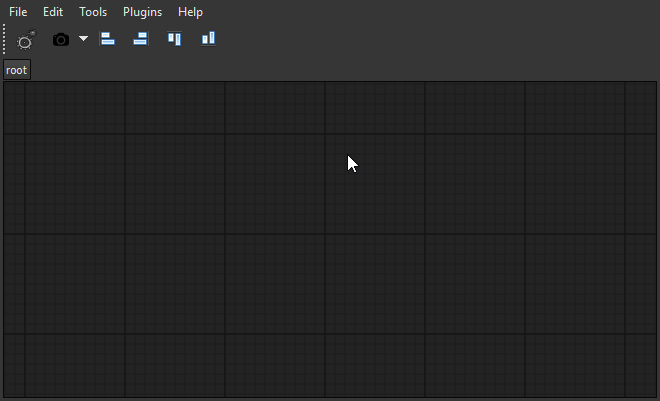

- #CONFIGURE NODE TO USE GIFSICLE HOW TO#
- #CONFIGURE NODE TO USE GIFSICLE INSTALL#
- #CONFIGURE NODE TO USE GIFSICLE CODE#
- #CONFIGURE NODE TO USE GIFSICLE WINDOWS#
The reduced colours there were a bit too much for me, especially for the purple gradient buttons at the end. rw-r-r- 1 simon wheel 613K Sep 13 12:54 1 simon wheel 3.7M Sep 13 12:52 datasette-launch.gif tmp % gifsicle -O3 -colors 48 -lossy -o datasette-launch-smaller.gif datasette-launch.gif
#CONFIGURE NODE TO USE GIFSICLE INSTALL#
I installed it using brew install gifsicle and ran it like this: /tmp % ls -lah 1 simon wheel 3.7M Sep 13 12:52 datasette-launch.gif You can tweak the number of colours and loss to get it smaller but that’s when it starts to look worse to my eyes Saw your GIF size TIL, and gifsicle -O3 -colors 48 -lossy gets it down to 320k.

Simon Willison’s TILs Compressing an animated GIF with gifsicle or ImageMagick mogrify Using gifsicle The spawn function is a much better choice when the size of the data expected from the command is large, because that data will be streamed with the standard IO objects.Compressing an animated GIF with gifsicle or ImageMagick mogrify | Simon Willison’s TILs (Remember, exec will buffer the whole data in memory before returning it.) The exec function is a good choice if you need to use the shell syntax and if the size of the data expected from the command is small. This stdout argument is the command’s output that we want to print out. The exec function buffers the output and passes it to the callback function (the second argument to exec) as the stdout argument there. A user can simply do a command injection attack using shell syntax characters like and $ (for example, command + ’ rm -rf ~’ ) Note that using the shell syntax comes at a security risk if you’re executing any kind of dynamic input provided externally. Since the exec function uses a shell to execute the command, we can use the shell syntax directly here making use of the shell pipe feature.
#CONFIGURE NODE TO USE GIFSICLE CODE#
For example, here’s code to spawn a new process that will execute the pwd command. The spawn function launches a command in a new process and we can use it to pass that command any arguments. We’re going to see the differences between these four functions and when to use each. There are four different ways to create a child process in Node: spawn(), fork(), exec(), and execFile().
#CONFIGURE NODE TO USE GIFSICLE WINDOWS#
On Windows, you need to switch the commands I use with their Windows alternatives. Note that examples I’ll be using in this article are all Linux-based. We can, for example, pipe the output of one command as the input to another (just like we do in Linux) as all inputs and outputs of these commands can be presented to us using Node.js streams. We can also control the arguments to be passed to the underlying OS command, and we can do whatever we want with that command’s output. We can control that child process input stream, and listen to its output stream. The child_process module enables us to access Operating System functionalities by running any system command inside a, well, child process. We can easily spin a child process using Node’s child_process module and those child processes can easily communicate with each other with a messaging system. Well I’ve got good news… The Child Processes Module

Node.js streams have a reputation for being hard to work with, and even harder to understand. Most of Node’s objects - like HTTP requests, responses, and streams - implement the EventEmitter module so they can… Understanding Node.js Event-Driven Architecture If you haven’t already, I recommend that you read these two other articles before you read this one: Please note that you’ll need a good understanding of Node.js events and streams before you read this article. I cover similar content in video format there. This article is a write-up of part of my Pluralsight course about Node.js. Scalability is baked into the platform and it’s not something you start thinking about later in the lifetime of an application. Node.js is designed for building distributed applications with many nodes. Using multiple processes is the best way to scale a Node application. The fact that Node.js runs in a single thread does not mean that we can’t take advantage of multiple processes and, of course, multiple machines as well. No matter how powerful your server may be, a single thread can only support a limited load. But eventually, one process in one CPU is not going to be enough to handle the increasing workload of your application. Single-threaded, non-blocking performance in Node.js works great for a single process. Read the updated version of this content and more about Node at /node-beyond-basics. Update: This article is now part of my book “Node.js Beyond The Basics”.
#CONFIGURE NODE TO USE GIFSICLE HOW TO#
How to use spawn(), exec(), execFile(), and fork()


 0 kommentar(er)
0 kommentar(er)
